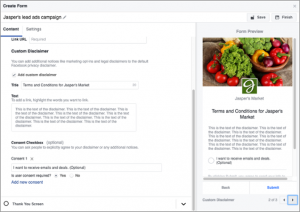
Do you ever sit at work and think about how much more productive you could be somewhere else? Maybe you need more peace and quiet than your office can provide. Or maybe you’re so distracted with figuring out how to get your kids from school on time that you hardly get enough work done to be home by dinner.
The traditional 9-to-5 work schedule can be difficult to pull off while maintaining a life outside the office, and a flexible schedule could be the game-changer you’re looking for. Just think: An arrangement that allows you to change your hours or work location to suit your schedule could mean that you’re more focused, productive, and successful at the right times.
And the benefits don’t stop with you. For your employer, it means that you’ll work in a way that maximizes productivity, you’ll feel more loyal to the company, and—if flexible schedules extend beyond you—the company will have another way to attract top talent.
But before you approach your boss with the idea, you need to have a plan. Here’s how to research the different types of flex schedules available, learn how they could benefit your company, and determine the best way to present your case.
How To Talk To Your Boss About A Flex Schedule
Many employers are fearful of flex schedules because they don’t know enough about them. But if you present the idea to your boss in a way that highlights how this arrangement would benefit the company and your work, it’s easier to reach an agreement.
Here’s how to prepare for the conversation:
1. Assess The Likelihood
The first step is determining whether a flex schedule is a realistic possibility or wishful thinking. If your job requires you to constantly supervise other workers —not lead from a distance—a flex schedule probably isn’t going to happen. But if your work is more client-facing or creative, you might find that a 9-to-5 schedule at your desk just isn’t as productive.
2. Know What You’re Asking For
It’s more effective to come to your boss with solid, logical reasons for wanting a different schedule than just not wanting to go into work every day. Similarly, you’ll want to spell out exactly what type of alternate schedule you’re asking for and why. (Hint: Make sure it’s realistic and that you’re still giving your employer a fair amount of your time.)
The beauty of flex schedules, though, is that there are plenty of options, and they can be as customizable as you need them to be. Here are a few types to consider:
- The Family Flex Plan: Parents know the struggles of getting kids to and from school, activities, and daycare when they work regular business hours. This option would give you leeway around drop-off and pick-up times, as well as dinnertime, and you could do a little work once the kids go to bed if necessary.
- The Shifted Schedule: Not every employee works best during traditional business hours—there are plenty of morning people and night owls who would get a lot more done with a work schedule that matches their internal clocks. And not only does this give you the ability to work when you’re more focused and energized, it’s also perfect for working with clients and employees in different time zones.
- The Three-Day Week: I have employees who work three or four days a week because they’re not looking for full-time hours. They’re still a vital part of the team and schedule their meetings and coverage accordingly. Working specific days of the week allows employees to dictate the amount of time they’re able to devote to their jobs without sacrificing quality.
- The Performance Plan: Some bosses really value face time, but the notion that time in the office equates to quality work just isn’t accurate. Under this flexible work plan, your employer wouldn’t dictate when or how you worked. Instead, you’d be measured, compensated, and promoted based on results and output.
3. Make It Enticing
Find specific examples of how a flex schedule will benefit the company. If you’re asking to only work four days a week, for example, explain how that will save your boss 20% on salary. If you’re asking for different hours, demonstrate how that will allow you to expand your outreach to other time zones. Be sure to justify your request in a way that puts more focus on the company than on you.
4. Draft A Proposal
If you want your request to be taken seriously, treat it like a business arrangement. Create a formal proposal that outlines your request, your reasoning, your plan of action, your goals, and the ways you’ll be held accountable. Most importantly, ask for a trial period. Request a month to try out this new schedule, or start working from home one day per week to show you continue to produce results. (More on drafting your proposal here.)
5. Set A Meeting
This isn’t the type of thing you should casually bring up during a water cooler conversation. Request a meeting with your boss so you can present your proposal and discuss the matter thoroughly. During your conversation, highlight the idea of a trial period. Your boss might be more willing to accept a change if it can be reversed.
6. Get Sh*t Done
As you’re waiting for approval, focus on meeting your goals, and people will stop worrying about what hours you’re in the office. We have a saying at my company that the only degree that matters is a GSD degree. Check in with your boss occasionally to make sure he or she is still happy with your work, and don’t do anything to jeopardize your employer’s trust.
Flexible work schedules still aren’t the norm, but they’re on the rise. If you want to discuss a flex schedule with your boss, be sure to do your research on the best type of schedule for your company, and highlight all the ways this arrangement would enhance your work and the company as a whole.
Business & Finance Articles on Business 2 Community
(269)
Report Post







